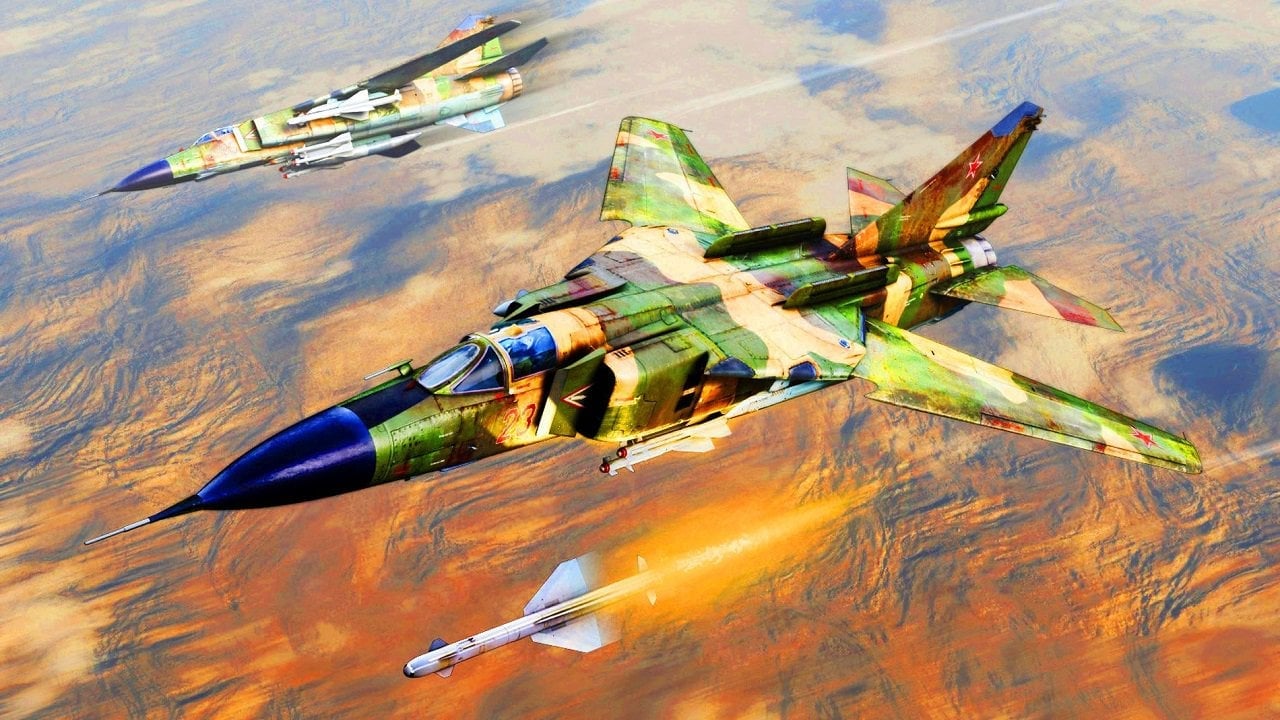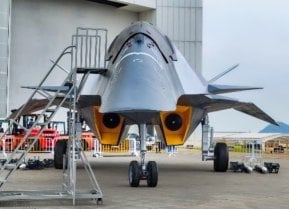5 Worst Fighter Jets To Ever Fly, Explained in 2 Words: Flying Coffins
While fighter jets are iconic symbols of aviation and critical military assets, not all have been successful. This article explores five of the worst fighters in history. The Soviet Yakovlev Yak-38 suffered from poor handling due to its VTOL design flaws and was prone to engine failure, limiting its effectiveness.
What a Mess: While fighter jets are iconic symbols of aviation and critical military assets, not all have been successful. This article explores five of the worst fighters in history. The Soviet Yakovlev Yak-38 suffered from poor handling due to its VTOL design flaws and was prone to engine failure, limiting its effectiveness.

-The MiG-23 had stability issues, unreliable engines, and a disappointing combat record. The American Convair F-102 Delta Dagger faced design problems and had a high accident rate. Nazi Germany's Heinkel He 162 was a rushed, poorly built jet that had little impact on WWII.
-Lastly, the Vought F7U Cutlass had an unusual design but was underpowered and unreliable, leading to its early retirement.
The Five Worst Fighter Jets in Aviation History
The fighter jet might be the most iconic aircraft type in the annals of aviation. When your average civilian thinks of an aircraft, the fighter jet is often the image that appears, with its sleek silhouette, roaring engines, and relative instability.
Fighters have progressed since their introduction over 100 years ago. From the simple biplanes of World War One to supersonic, super-cruising, ultra-maneuverable, stealth-capable fifth-generation fighters, the fighter jet is a constantly evolving concept. It is far more than an aviation icon. It is a foundational weapon, integral to war planning and military force structure. Militaries around the world spend vast percentages of their overall budget on fighter design and development. Indeed, the most expensive weapons system in world history is the F-35 Joint Strike Fighter.
Fighter platforms are worth the praise and the military investment, especially top airframes like the F-15 Eagle or the F/A-18 Hornet. But aviation history is littered with botched fighter projects. Let’s consider five of the worst fighters of all time.
Yakovlev Yak-38
The Soviet Union spent the Cold War competing with the West to develop the most capable military technology. When the British unveiled the Harrier GR.1 in 1967 – a “jump jet” capable of vertical takeoff and landing (VTOL) – the Soviets scrambled to counter. Their answer was the Yakovlev Yak-38, a VTOL aircraft that performed relatively well. But the integration of the Yak-38’s rear thrust engine and two lift turbofans made the jet deathly difficult to handle. If either of the lift fans failed, the Yak-38 would spin out of control. And because the lift fans were sensitive to dirt and dust (like the kind found in Afghanistan), the lift fans were prone to failure.

The Yak-38 was also a tactical failure, with just four hardpoints and an operational range limited to just 320 kilometers. When the Soviet Union fell, the Yak-38 was abandoned, whereas the Harrier is still in service today.
Mikoyan-Gurevich MiG-23
Soviet/Russian aerospace manufacturer Mikoyan-Gurevich has a long history of design accomplishments. The company abbreviation, “MiG,” is synonymous in the West with “enemy aircraft,” and for good reason. But MiG has also produced its fair share of duds.
The MiG-23 was supposed to be another feather in MiG’s cap, like the MiG-15 or the MiG-21 before it. But the sweep-wing MiG-23 proved to be a nightmare, with poor handling, poor stability, and an engine that overheated often and died early.

The MiG-23’s maintenance costs were much higher than expected, and the jet’s combat record much poorer. Deployed in Syria and Iraq, the MiG-23 suffered in encounters against F-4s, F-14s, and F-15s. Even the MiG-21, which the MiG-23 had been designed to replace, bested the MiG-23 in combat. The MiG-23 was unceremoniously retired (except in Syria and North Korea) in favor of the MiG-27.
Convair F-102 Delta Dagger
The Convair F-102 Delta Dagger, part of the “Century Series,” was America’s first all-weather supersonic jet fighter, and the first American fighter to feature a delta wing. Entering service in 1956, problems arose immediately.
The F-102, designed to be a high-speed aircraft, failed to reach Mach 1 – the fuselage had to be redesigned to cope with transonic wave drag. After the redesign, the jet was capable of reaching Mach 1.22, but other issues cropped up, requiring a variety of fixes. The Air Force did not apply uniform fixes to the F-102 fleet, so different F-102s had different capabilities.
The F-102’s biggest problem, however, was its safety rating. Out of the 1,000 F-102s produced, 259 were lost to accidents, resulting in the death of 70 pilots.

Heinkel He 162
Nazi Germany deserves credit for debuting jet technology with the Messerschmitt Me 262. Late in the war (and late in the regime), the Nazis experimented with a death-gasp effort to produce more fighter jets. The result was the Heinkel He 162, aka the “Volksjager,” or People’s Fighter.
The He 162, like the Volkswagen car, was designed to be built as cheaply as possible, and with semi-skilled labor. Why? Because by the end of the war, the Nazis were struggling to keep their war economy humming; they were essentially depleted. Accordingly, the He 162 was built largely from wood, as metal alloys were unavailable. The design was completed in about two months, and as you might assume, the jet flew poorly. Three-hundred He 162s were rushed into action, but it was far too late. Nazi Germany collapsed and the He 162 faded into obscurity without having made an impact on the war.
Vought F7U Cutlass
The Vought F7U Cutlass was visually distinct. This was a design from the dawn of the jet age, when designs were not standardized and there was room for experimentation. The F7U was a result of said experimentation: It was tailless, with swept wings.

In my opinion, the F7U is very cool looking, and it marked the first time the Americans had built an aircraft with swept wings and an afterburner. The unusual design offered extraordinary ability and agility, but it suffered from a variety of problems. The engine was underpowered, earning the F7U the nickname “Gutless Cutlass.” Similarly, many of the systems were novel and proved unreliable. A poor safety record inspired pilots to stay away, and the jet was retired in 1959.
About the Author: Harrison Kass, Defense Expert
Harrison Kass is a defense and national security writer with over 1,000 total pieces on issues involving global affairs. An attorney, pilot, guitarist, and minor pro hockey player, Harrison joined the US Air Force as a Pilot Trainee but was medically discharged. Harrison holds a BA from Lake Forest College, a JD from the University of Oregon, and an MA from New York University. Harrison listens to Dokken.
All images are Creative Commons and/or Shutterstock.


